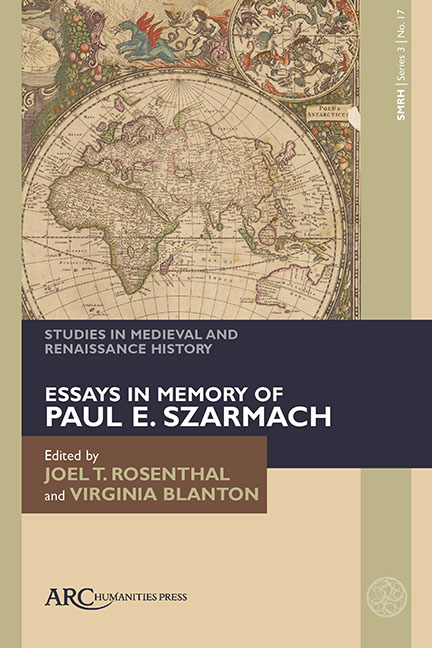Book contents
- Frontmatter
- Contents
- List of Illustrations
- Introduction
- Memories of Viking Age Cultural Contact: England in the Íslendingasögur
- Expressions of Cultural Disability: Navigating (Non)Normativity in the Hebrew–Italian Melekh Artus (King Artus)
- “All the rancour and enmity between us”. The War Between Richard, Earl Marshal, and King Henry III: Its Origins and Resolution
- Royal Consumption and Gifts of Deer in Thirteenth-Century England
- Travers and Trappe in the Palace of Pandarus: A Note
- Benedictine Devotion to England’s Saints: Thomas de la Mare, John of Tynemouth, and the Sanctilogium in Cotton Tiberius E. i
- The Rise of Admission by Apprenticeship Among the Freemen of Norwich, 1365–1415
- Nuns on the Run, or the “Sturdy and Wilful Dames” of Syon Abbey and their Disobedience to the Tudor State ca. 1530–1600
- Taking the Tour: Heritage Management in A Connecticut Yankee in King Arthur’s Court
Travers and Trappe in the Palace of Pandarus: A Note
Published online by Cambridge University Press: 13 February 2024
- Frontmatter
- Contents
- List of Illustrations
- Introduction
- Memories of Viking Age Cultural Contact: England in the Íslendingasögur
- Expressions of Cultural Disability: Navigating (Non)Normativity in the Hebrew–Italian Melekh Artus (King Artus)
- “All the rancour and enmity between us”. The War Between Richard, Earl Marshal, and King Henry III: Its Origins and Resolution
- Royal Consumption and Gifts of Deer in Thirteenth-Century England
- Travers and Trappe in the Palace of Pandarus: A Note
- Benedictine Devotion to England’s Saints: Thomas de la Mare, John of Tynemouth, and the Sanctilogium in Cotton Tiberius E. i
- The Rise of Admission by Apprenticeship Among the Freemen of Norwich, 1365–1415
- Nuns on the Run, or the “Sturdy and Wilful Dames” of Syon Abbey and their Disobedience to the Tudor State ca. 1530–1600
- Taking the Tour: Heritage Management in A Connecticut Yankee in King Arthur’s Court
Summary
CHAUCER PRESENTS HIS audience with many puzzles, but in addition to the puzzles he intends, we encounter many that are unintended, some of them the result of information simply left out because it was unnecessary for his fourteenth-century audience. Other puzzles arise from modern assumptions, misunderstandings, and mistranslations. Still others are the result of our unwillingness (or inability) to fault Chaucer himself for anything in his poetry that does not seem to make sense: Chaucer never makes a mistake. In this brief note, I will consider a number of these unintended puzzles, not with an eye to eliminating them, but in order to clarify our vision of a scene that has puzzled too many of us for too long. The floor plan of Pandarus's living quarters in book 3 of Chaucer's Troilus and Criseyde, and the subsequent placement of the two main actors of the plot on the night of their love's consummation, has been subject to more than one analysis, but so far the explanations presented have been unconvincing because they do not always square with what the text says (or doesn't say). This is not to say that there is some “key” to the questions that will open the door to some definite answers. Any attempt to present a reasonable hypothesis about what Pandarus is up to will involve some speculation. Chaucer is evidently not interested primarily in the clarity of Pandarus's presentation (3. 659–72), still less in any kind of realism, but rather in its effectiveness in aiding Pandarus to carry out his plan for serving his friend Troilus. Nor is Chaucer required to satisfy our expectations. The best a reader can do, then, is to use what we do know to throw some light on what we do not know, what we think we know, what we are not sure we know—while being cautious not to put undue weight on scattered details that might not bear it.
To begin with Pandarus himself, it would be useful to look at him from an angle not often reflected in the literature about the poem. Pandarus is a wealthy Trojan aristocrat and Pandarus's Troy is Chaucer's version of fourteenth-century London (or perhaps some other European city Chaucer had visited).
- Type
- Chapter
- Information
- Studies in Medieval and Renaissance History series 3 volume 17Essays in Memory of Paul E. Szarmach, pp. 85 - 104Publisher: Amsterdam University PressPrint publication year: 2023



